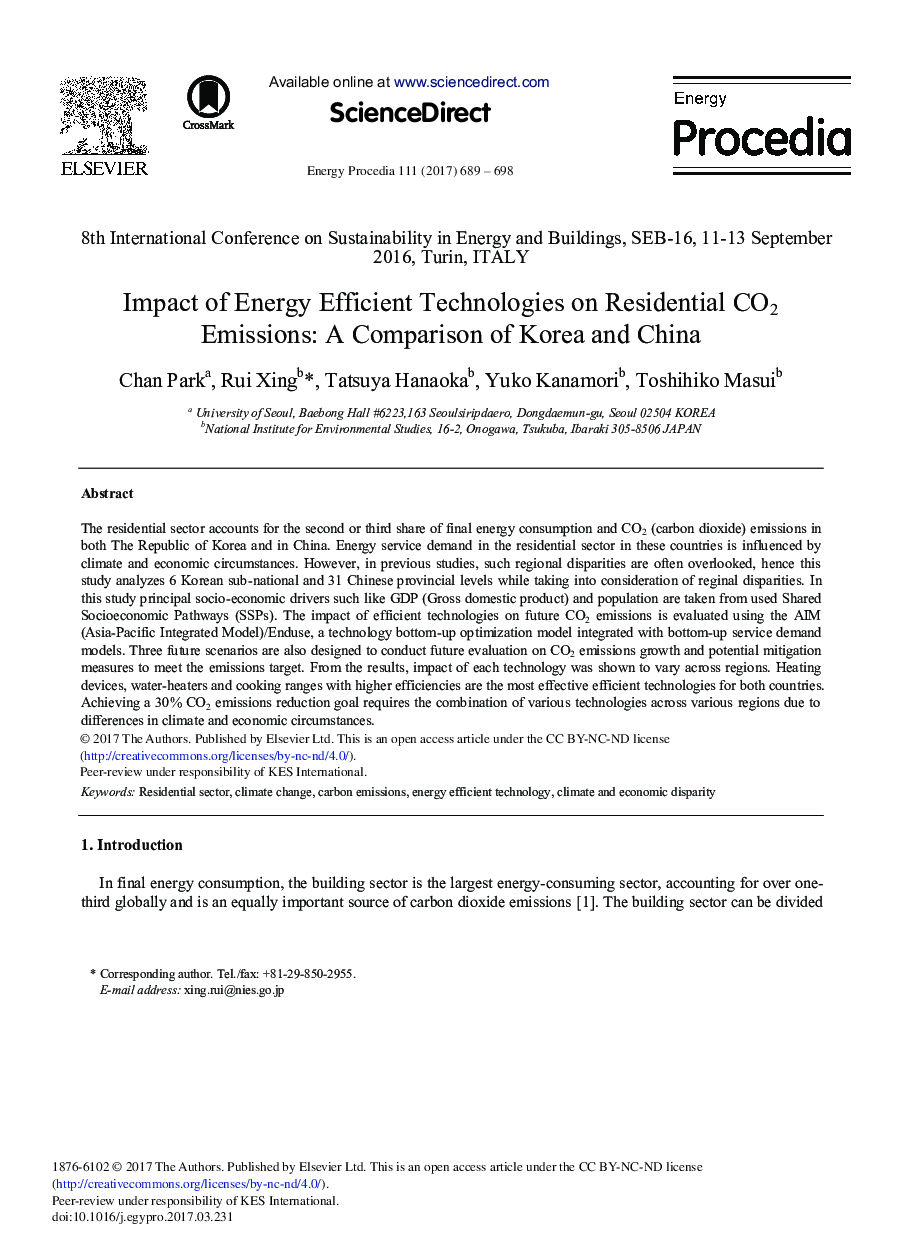| Article ID | Journal | Published Year | Pages | File Type |
|---|---|---|---|---|
| 5445585 | Energy Procedia | 2017 | 10 Pages |
Abstract
The residential sector accounts for the second or third share of final energy consumption and CO2 (carbon dioxide) emissions in both The Republic of Korea and in China. Energy service demand in the residential sector in these countries is influenced by climate and economic circumstances. However, in previous studies, such regional disparities are often overlooked, hence this study analyzes 6 Korean sub-national and 31 Chinese provincial levels while taking into consideration of reginal disparities. In this study principal socio-economic drivers such like GDP (Gross domestic product) and population are taken from used Shared Socioeconomic Pathways (SSPs). The impact of efficient technologies on future CO2 emissions is evaluated using the AIM (Asia-Pacific Integrated Model)/Enduse, a technology bottom-up optimization model integrated with bottom-up service demand models. Three future scenarios are also designed to conduct future evaluation on CO2 emissions growth and potential mitigation measures to meet the emissions target. From the results, impact of each technology was shown to vary across regions. Heating devices, water-heaters and cooking ranges with higher efficiencies are the most effective efficient technologies for both countries. Achieving a 30% CO2 emissions reduction goal requires the combination of various technologies across various regions due to differences in climate and economic circumstances.
Related Topics
Physical Sciences and Engineering
Energy
Energy (General)
Authors
Chan Park, Rui Xing, Tatsuya Hanaoka, Yuko Kanamori, Toshihiko Masui,
